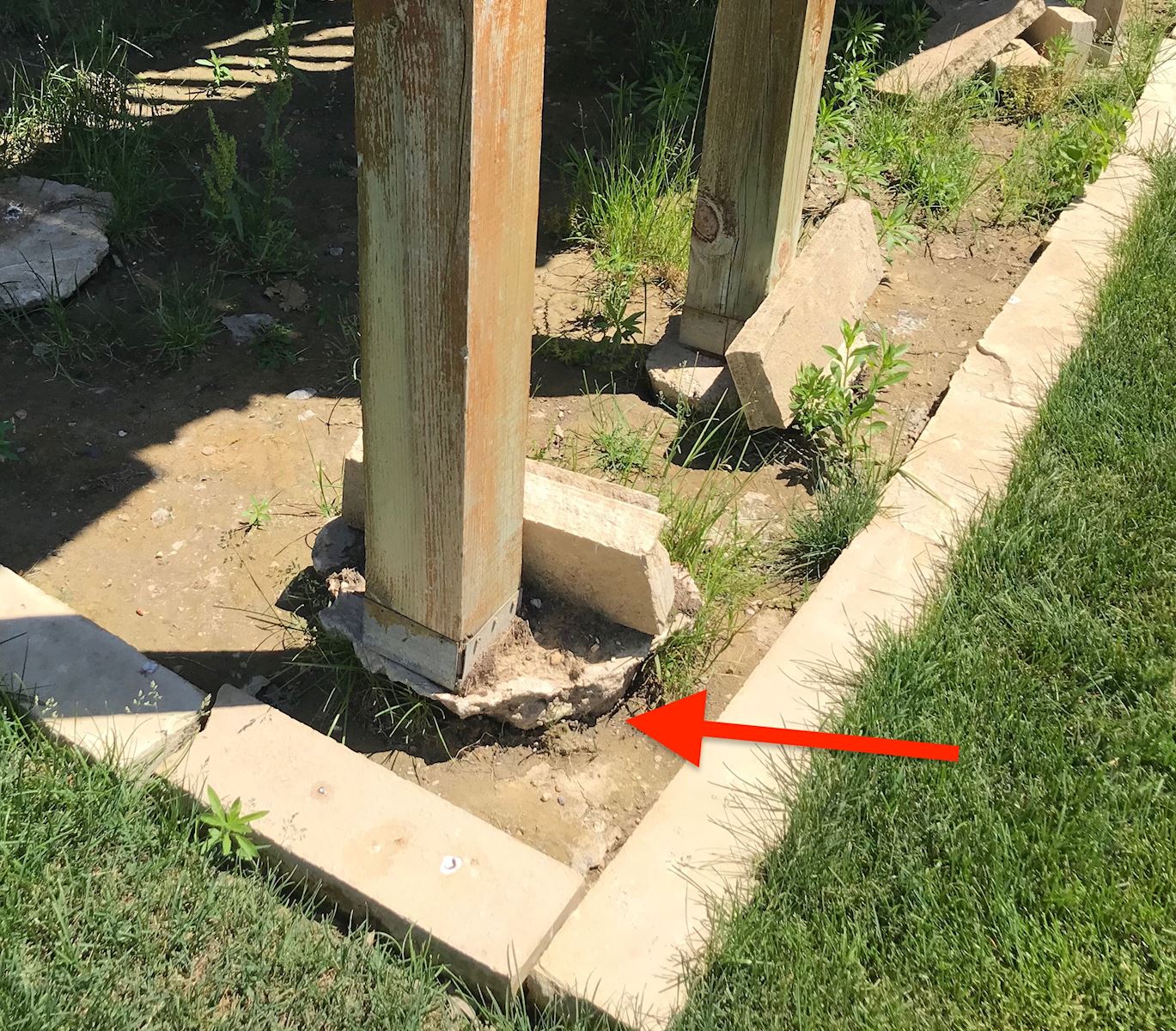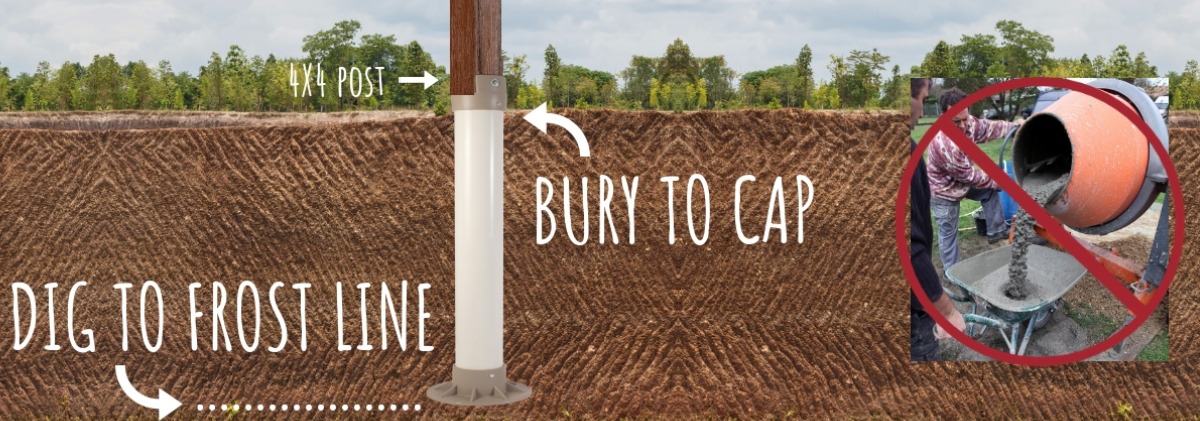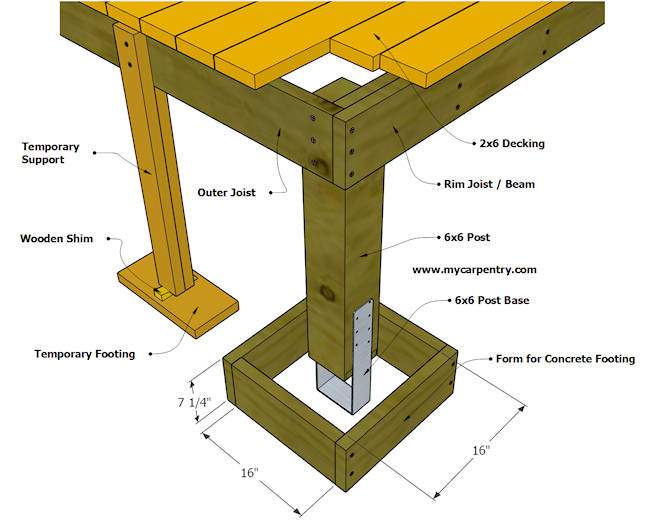Expert Tips for Putting Up Deck Footings to Assistance Your Outdoor Area
When it concerns constructing a deck, one of one of the most vital elements to think about is the installment of correct grounds. These footings are the foundation upon which your exterior room will relax, offering security and assistance for several years ahead. However exactly what does it take to set up deck grounds correctly? In this discussion, we will check out professional suggestions and techniques that can aid guarantee a effective and resilient deck installment. From choosing the ideal sort of grounds to avoiding common mistakes, we will certainly give you with the knowledge and insights you require to confidently get started on your deck-building trip. Allow's dive right in and uncover the trick to a long-lasting and strong exterior room.
Value of Appropriate Deck Grounds
Appropriate deck footings are essential for ensuring the security and durability of your outdoor area. Without strong and appropriately set up grounds, your deck may become unsteady, leading to security threats and expensive fixings.

In addition to stability, proper deck grounds likewise add to the durability of your outside area (Deck Footings). Footings that are designed and created to endure the aspects and soil problems in your area will certainly help avoid the deck from shifting or settling with time. By ensuring the footings are effectively sized and set up, you can reduce the risk of damage to the deck framework, prolonging its life expectancy and lowering the requirement for costly fixings or replacements

Selecting the Right Sort Of Footings
When selecting the suitable type of footings for your deck, it is necessary to think about factors such as soil conditions, local building codes, and the overall design of your outside area. The kind of footing you choose will play a critical role in guaranteeing the stability and longevity of your deck.
One common sort of ground is the concrete ground. Concrete grounds are suitable for the majority of soil conditions and supply superb support for decks. They are usually mounted below the frost line to avoid changing and resolving because of freezing and thawing cycles. One more choice is helical piers, which are excellent for areas with unpredictable dirt or high water tables. These piers are screwed into the ground and provide strong support for the deck.
In many cases, you might require to utilize specific footings, such as stack grounds or deep structures, if you are developing a big or multi-level deck. These grounds are designed to disperse the weight of the deck over a bigger location, making sure security and stopping sinking or clearing up.
Prior to choosing a kind of ground, it is vital to get in touch with neighborhood structure codes and laws to guarantee compliance. In addition, take into consideration the style and intended use of your outside area. Factors such as the dimension, form, and load-bearing demands of your deck will certainly affect the kind of footing that is most appropriate.
Preparing the Ground for Footing Setup
To correctly prepare the ground for footing installment, it is vital to analyze the soil problems and take required actions to make sure stability and resilience of the deck. The initial step is to dig deep into the area where the footings will certainly be mounted.
Once the location has actually been dug deep into, the next action is to compact the soil. This can be done making use of a plate compactor or by utilizing a hand tamper. Condensing the soil helps to remove any kind of gaps or air pockets, which can cause settling and instability gradually.
After condensing the soil, it is necessary to lay a layer of crushed rock or smashed stone at the end of the excavation. This will certainly give drainage and aid to stop water from merging around the grounds, which can lead to erosion and instability.
Step-by-Step Overview to Installing Deck Footings
After appropriately preparing the ground for footing installment, the following action is to start the procedure of mounting deck grounds. This detailed overview will give you with a clear understanding of how to install deck footings for your straight from the source outside area.
Identify the area: Start by marking the positions of the deck footings utilizing stakes and string. Guarantee that the places line up with the style and design of your deck.
Dig the openings: Make use of a blog post opening miner or an auger to dig the openings for the grounds. The depth and size of the holes should remain in conformity with regional building codes and the certain requirements of your deck style.
Level the holes: Use a level to guarantee that the holes are dug to the appropriate deepness and are degree with each various other. (Deck Footings)
Include crushed rock: Area a layer of gravel at the end of each opening to boost water drainage and stop the timber from decomposing.
Place the grounds: Position the grounds right into the holes, making sure they are degree and plumb. Use a level and a determining tape to make certain accuracy.
Safeguard the footings: Pour concrete into the openings around the footings, loading them to the top. Make use of a blog post level to make certain the grounds stay degree as the concrete collections.
Allow time for treating: Allow the concrete remedy according to the supplier's instructions prior to waging the deck building and construction.
Usual Mistakes to Avoid During Footing Installment
One crucial element to take into consideration throughout the setup of deck grounds is staying clear of usual mistakes that can jeopardize the security and long life of your outside space. While deck grounds might feel like a straightforward and uncomplicated component of the building process, neglecting particular variables can bring about pricey repairs and prospective safety and security threats down the line.

In addition, disregarding to set up proper water drainage measures can trigger water to build up around the grounds, resulting in rot, decay, and the ultimate weakening of the deck's structure. Making use of the wrong type of footing material or stopping working to adequately safeguard the grounds can jeopardize their structural stability.
To prevent these blunders, it is important to seek advice from an expert or a knockout post comply with sector standards to guarantee proper footing setup. By doing so, you can ensure the security and longevity of your outdoor room, offering a satisfying and risk-free atmosphere for years to find.
Final Thought
Finally, setting up appropriate deck grounds is vital for the stability and get more long life of your exterior space. By picking the ideal kind of grounds and effectively preparing the ground, you can ensure a solid structure for your deck. Adhering to a detailed guide and avoiding common blunders throughout footing installation will certainly better boost the durability and security of your deck.
Appropriate deck grounds are essential for ensuring the security and longevity of your outdoor room. The footings offer as a connection in between the ground and the deck, allowing the weight of the deck and its residents to be spread evenly right into the soil.One typical kind of ground is the concrete footing. Place the footings: Position the grounds into the openings, making sure they are level and plumb. Protect the footings: Pour concrete right into the openings around the grounds, filling them to the top.